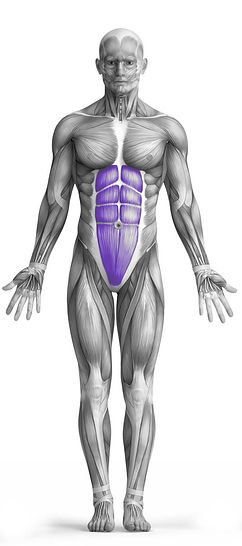Loaded Beast Sprawl 101 Video Tutorial
0

Exercise Synopsis
Target Muscle Group
Abs
Secondary Targets
Execution
Compound
Force Type
Push
Required Equipment
Bodyweight
Fitness Level
Intermediate
Variations
Alternatives
Timer
Hour
Minute
Second
Stopwatch
00:00:00:00
Overview
The Loaded Beast Sprawl is a dynamic full-body exercise that primarily targets the abs while also engaging the shoulders as a secondary muscle group. This bodyweight movement involves starting in a crouched position known as the beast position, then explosively extending the legs backward into a plank position, resembling a sprawl motion. The exercise challenges core stability and strength as well as shoulder stability due to the transition from a crouched position to a plank. Additionally, it can be intensified by incorporating weights or resistance bands for added resistance.
How to Perform
Begin in a crouched position on the ground with your hands placed directly beneath your shoulders and your knees bent, hovering just above the ground. This is known as the beast position.
Engage your core muscles to stabilize your spine and maintain a neutral alignment from your head to your tailbone.
From the beast position, simultaneously extend your legs straight back behind you while keeping your hands firmly planted on the ground. Your body should now be in a plank position.
Ensure that your shoulders are directly over your wrists and your body forms a straight line from your head to your heels.
Hold the plank position briefly to stabilize your body and engage your core muscles.
To return to the starting position, reverse the movement by bending your knees and pulling them back towards your chest, while simultaneously bringing your hips up towards the ceiling. This movement resembles a backward crawl.
Once your knees are back underneath your body in the crouched beast position, repeat the exercise for the desired number of repetitions.
Throughout the movement, focus on maintaining control and stability, especially in the core and shoulders.
Avoid overarching or rounding your lower back during the sprawl motion to prevent strain on the spine.
Perform the exercise at a controlled pace, emphasizing proper form and muscle engagement to maximize its effectiveness in targeting the abs and shoulders.
★ Bonus: For exercises that involve external weights (such as dumbbells, barbells, or machines), the One Rep Max (1RM) calculator can help you estimate your maximum lifting capacity. Use it to track your strength progress and adjust your training for optimal results.
Tips
Start in a crouched position with hands beneath shoulders and knees hovering above the ground.
Engage core muscles to maintain a neutral spine alignment throughout the exercise.
Extend legs straight back to enter a plank position, keeping shoulders over wrists.
Hold the plank briefly, focusing on stabilizing the body and engaging the abs.
Reverse the movement by bending knees and pulling them back towards the chest.
Simultaneously lift hips towards the ceiling, returning to the crouched position.
Maintain control and avoid arching or rounding the lower back during the movement.
Perform the exercise at a controlled pace to maximize muscle engagement.
Focus on breathing rhythmically to support stability and endurance.
Aim for smooth transitions between positions to optimize the effectiveness of the exercise on the abs and shoulders.
How Not to Perform
Avoid letting your hips sag or lift too high during the plank position; maintain a straight line from head to heels to effectively engage the abs and prevent strain on the lower back.
Do not rush through the movement; perform each transition with controlled movements to maximize muscle engagement and prevent jerky movements that can lead to injury.
Avoid collapsing your shoulders or shrugging during the exercise; keep them stabilized and squared to the ground to effectively engage the shoulder muscles and prevent strain.
Do not slide your feet too quickly or forcefully; focus on smooth and controlled movements to target the abs and prevent unnecessary strain on the hip flexors.
Avoid holding your breath; remember to breathe rhythmically throughout the exercise to maintain energy levels and optimize oxygen flow to the muscles.
Do not forget to engage your core muscles throughout the entire movement; focus on contracting the abs to stabilize your body and support the transitions.
Avoid arching or rounding your back during the movement; maintain a neutral spine alignment to prevent strain on the lower back and maximize effectiveness.
Do not neglect proper warm-up and stretching before performing the exercise; this helps prepare your muscles for the workout and reduce the risk of injury.
Avoid overextending your arms or locking out your elbows; keep them slightly bent to prevent strain on the joints and maintain muscle engagement.
Do not perform the exercise if you experience pain or discomfort; listen to your body and stop if necessary to prevent injury and ensure safety.
Variations
Variations of fitness exercises refer to different ways of performing a specific exercise or movement to target various muscle groups, intensities, or goals. These variations aim to challenge the body differently, prevent plateaus, and cater to individuals with varying fitness levels.
Alternatives
Alternative exercises in fitness refer to different movements or activities that target similar muscle groups or serve the same training purpose as the primary exercise. These alternative exercises can be used as substitutes when the original exercise is unavailable or challenging to perform due to various reasons such as equipment limitations, injuries, or personal preferences.








